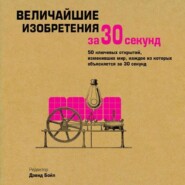По всем вопросам обращайтесь на: info@litportal.ru
(©) 2003-2024.
✖
Английский язык для медиков
Настройки чтения
Размер шрифта
Высота строк
Поля
Dermis is a connective tissue layer of mesodermal origin subjacent the epidermis and its basement membrane. The dermis—epidermal junction, especially in thick skin, is characterized by numerous papillary interdigitations of the dermal connective tissue and epidermal epithelium. This increases the surface area of attachment and brings blood vessels in closer proximity to the epidermal cells. The epidemis, like epithelia in general, is devoid of blood vessel. Histologically, dermis consists of two identifiable regions.
Papillary layer, associated principally with the dermal papillae, is the most superficial layer. It consists of a loosely packed, irregular meshwork of collagen fibrils that contain fine blood vessels and nerve endings.
Reticular layer is the deeper dermal layer and consists of coarse collagen bundles intertwined with elastic fibers in a gel matrix. This layer is a typical dense irregular connective tissue.
HYPODERMIS: this layer of loose vascular connective tissue is infiltrated with adipocytes and corresponds to the superficial fascia of gross anatomy. However, since it contains the deepest portions of the cutaneous glands and hairs, it is also an important part of the skin. The hypoder—mis fastens the skin to underlying muscles and other structures.
New words
dermis – дерма connective – соединительный membrane – мембрана junction – соединение
to be characterized by – характеризоваться чем—то numerous – значительный
to increase – увеличивать
surface – поверхность area – площадь epidermal – эпидермальный thick – толстый skin – кожа
papillary – папиллярный devoid – происходить meshwork – ячеистая сеть coarse – грубый bundle – связка interwine – сплетаться bring – приносить to consists of – состоять из to contain – содержать collagen – коллагеновый adipocyte – жировая клетка
6. Cutaneous appendages
Cutaneous appendages are all derivatives of the epidermis.
Eccrine (merocrine) sweat glands are simple, coiled, tubular glands that are widely distributed over the body. Secretory portions are tightly coiled and consist of a single layer of columnar—like pyramidal cells.
Duct portions, composed of two cuboidal cell layers, are corkscrew—shaped and open onto the epidermal surface. These glands are important in thermal regulation.
Control of the eccrine glands is mainly by the innerva—tion of cholinergic fibers.
Apocrine sweat glands are also simple, coiled, tubular glands but are much less abundant in their distribution than eccrine glands. They can be found in the axillary, ar—eolar, and anal regions.
Secretory portions of these glands are composed of a single layer of cuboidal or columnar cells. They are larger and have a much wider luminal diameter than eccrine sweat glands. Myoepithelial cells surround the secretory cells within the basement membrane and contract to facilitate secretion.
Duct portions are similar to those of eccrine sweat glands but open onto hair follicles instead of onto the epidermal surfaces.
Functions of these glands in humans is not at all clear. Specialized apocrine glands in the ear canal (ceruminous glands) produce a secretion in conjunction with adjacent sebaceous glands to form the protective earwax (cerumen). Control of the apocrine glands is hormonal and via the innervation of adrenergic fibers. These glands do not begin to function until puberty.
Sebaceous glands are simple, branched holocrine aci—nar glands. They usually discharge their secretions onto the hair shaft within hair follicles. These glands are found in the dermis throught the skin, except on the palms and soles.
Secretory portions consist of peripherally located, flattened stem cells that resemble basal keratinocytes. Toward the center of the acini, enlarged differentiated cells are engorged with lipid. Death and fragmentation of cells nearest the duct portion result in the holocrine mechanism of secretion.
Duct portions of sebaceous glands are composed of stratified squamous epithelium that is continuous with the hair cat and epidermal surface.
Functions involve the lubrication of both hairs and corni—fied layers of the skin, as well as resistance to desiccation.
Control of sebaceous glands is hormonal. Enlargement of the acini occurs at puberty.
Hairs are long, filamentous projections consisting of dead keratini—zed epidermal cells. Each hair derives from an epidermal invagination called the hair follicle, which possesses a terminal hair bulb, located in the dermis or hypo—dermis, from which the hair shaft grows. Contraction of smooth muscles raise the hairs and dimple the epidermis («goose flesh»).
Nails, like hair, are a modified stratum corneum of the epidermis. They contain hard keratin that forms in a manner similar to the formation of hair. Cells continually proliferate and keratinize from the stratum basale of the nail matrix.
New words
cutaneous – кожный
appendace – покров
tubular – трубчатый
pyramidal – пирамидальный
surface – поверхность
thermal – тепловой
innervation – иннервация
7. Matter
Matter is anything that occupies space, possesses mass and can be perceived by our sense organs. It exists in nature in three, usually inter convertible physical states: solids, liquids and gases. For instance, ice, water and steam are respectively the solid, liquid and gaseous states of water. Things in the physical world are made up of a relatively small number of basic materials combined in various ways. The physical material of which everything that we can see or touch is made is matter. Matter exists in three different states: solid, liquid and gaseous. Human senses with the help of tools allow us to determine the properties of matter. Matter can undergo a variety of changes – physical and chemical, natural and controlled.
Chemistry and physics deal with the study of matter, its properties, changes and transformation with energy. There are two kinds of properties: physical – colour, taste, odour, density, hardness, solubility and ability to conduct electricity and heat; in solids the shape of their crystals is significant, freezing and boiling points of liquids.
Chemical properties are the changes in composition undergone by a substance when it is subjected to various conditions. The various changes may be physical and chemical. The physical properties are temporary. In a chemical change the composition of the substance is changed and new products are formed. Chemical properties are permanent.
It is useful to classify materials as solid, liquid or gas (though water, for example, exists as solid (ice), as liquid (water) and as gas (water vapour). The changes of state described by the terms solidify (freeze), liquify (melt), va—pourise (evaporate) and condense are examples of physical changes. After physical change there is still the same material. Water is water whether it is solid, liquid or gas. Also, there is still the same mass of material. It is usually easy to reverse a physical change.
New words
matter – материя
mass – масса
sense – чувство
organ – орган
steam – пар
to undergo – подвергать
variety – разнообрзие
change – перемена
physical – физический
chemical – химический
Papillary layer, associated principally with the dermal papillae, is the most superficial layer. It consists of a loosely packed, irregular meshwork of collagen fibrils that contain fine blood vessels and nerve endings.
Reticular layer is the deeper dermal layer and consists of coarse collagen bundles intertwined with elastic fibers in a gel matrix. This layer is a typical dense irregular connective tissue.
HYPODERMIS: this layer of loose vascular connective tissue is infiltrated with adipocytes and corresponds to the superficial fascia of gross anatomy. However, since it contains the deepest portions of the cutaneous glands and hairs, it is also an important part of the skin. The hypoder—mis fastens the skin to underlying muscles and other structures.
New words
dermis – дерма connective – соединительный membrane – мембрана junction – соединение
to be characterized by – характеризоваться чем—то numerous – значительный
to increase – увеличивать
surface – поверхность area – площадь epidermal – эпидермальный thick – толстый skin – кожа
papillary – папиллярный devoid – происходить meshwork – ячеистая сеть coarse – грубый bundle – связка interwine – сплетаться bring – приносить to consists of – состоять из to contain – содержать collagen – коллагеновый adipocyte – жировая клетка
6. Cutaneous appendages
Cutaneous appendages are all derivatives of the epidermis.
Eccrine (merocrine) sweat glands are simple, coiled, tubular glands that are widely distributed over the body. Secretory portions are tightly coiled and consist of a single layer of columnar—like pyramidal cells.
Duct portions, composed of two cuboidal cell layers, are corkscrew—shaped and open onto the epidermal surface. These glands are important in thermal regulation.
Control of the eccrine glands is mainly by the innerva—tion of cholinergic fibers.
Apocrine sweat glands are also simple, coiled, tubular glands but are much less abundant in their distribution than eccrine glands. They can be found in the axillary, ar—eolar, and anal regions.
Secretory portions of these glands are composed of a single layer of cuboidal or columnar cells. They are larger and have a much wider luminal diameter than eccrine sweat glands. Myoepithelial cells surround the secretory cells within the basement membrane and contract to facilitate secretion.
Duct portions are similar to those of eccrine sweat glands but open onto hair follicles instead of onto the epidermal surfaces.
Functions of these glands in humans is not at all clear. Specialized apocrine glands in the ear canal (ceruminous glands) produce a secretion in conjunction with adjacent sebaceous glands to form the protective earwax (cerumen). Control of the apocrine glands is hormonal and via the innervation of adrenergic fibers. These glands do not begin to function until puberty.
Sebaceous glands are simple, branched holocrine aci—nar glands. They usually discharge their secretions onto the hair shaft within hair follicles. These glands are found in the dermis throught the skin, except on the palms and soles.
Secretory portions consist of peripherally located, flattened stem cells that resemble basal keratinocytes. Toward the center of the acini, enlarged differentiated cells are engorged with lipid. Death and fragmentation of cells nearest the duct portion result in the holocrine mechanism of secretion.
Duct portions of sebaceous glands are composed of stratified squamous epithelium that is continuous with the hair cat and epidermal surface.
Functions involve the lubrication of both hairs and corni—fied layers of the skin, as well as resistance to desiccation.
Control of sebaceous glands is hormonal. Enlargement of the acini occurs at puberty.
Hairs are long, filamentous projections consisting of dead keratini—zed epidermal cells. Each hair derives from an epidermal invagination called the hair follicle, which possesses a terminal hair bulb, located in the dermis or hypo—dermis, from which the hair shaft grows. Contraction of smooth muscles raise the hairs and dimple the epidermis («goose flesh»).
Nails, like hair, are a modified stratum corneum of the epidermis. They contain hard keratin that forms in a manner similar to the formation of hair. Cells continually proliferate and keratinize from the stratum basale of the nail matrix.
New words
cutaneous – кожный
appendace – покров
tubular – трубчатый
pyramidal – пирамидальный
surface – поверхность
thermal – тепловой
innervation – иннервация
7. Matter
Matter is anything that occupies space, possesses mass and can be perceived by our sense organs. It exists in nature in three, usually inter convertible physical states: solids, liquids and gases. For instance, ice, water and steam are respectively the solid, liquid and gaseous states of water. Things in the physical world are made up of a relatively small number of basic materials combined in various ways. The physical material of which everything that we can see or touch is made is matter. Matter exists in three different states: solid, liquid and gaseous. Human senses with the help of tools allow us to determine the properties of matter. Matter can undergo a variety of changes – physical and chemical, natural and controlled.
Chemistry and physics deal with the study of matter, its properties, changes and transformation with energy. There are two kinds of properties: physical – colour, taste, odour, density, hardness, solubility and ability to conduct electricity and heat; in solids the shape of their crystals is significant, freezing and boiling points of liquids.
Chemical properties are the changes in composition undergone by a substance when it is subjected to various conditions. The various changes may be physical and chemical. The physical properties are temporary. In a chemical change the composition of the substance is changed and new products are formed. Chemical properties are permanent.
It is useful to classify materials as solid, liquid or gas (though water, for example, exists as solid (ice), as liquid (water) and as gas (water vapour). The changes of state described by the terms solidify (freeze), liquify (melt), va—pourise (evaporate) and condense are examples of physical changes. After physical change there is still the same material. Water is water whether it is solid, liquid or gas. Also, there is still the same mass of material. It is usually easy to reverse a physical change.
New words
matter – материя
mass – масса
sense – чувство
organ – орган
steam – пар
to undergo – подвергать
variety – разнообрзие
change – перемена
physical – физический
chemical – химический

















